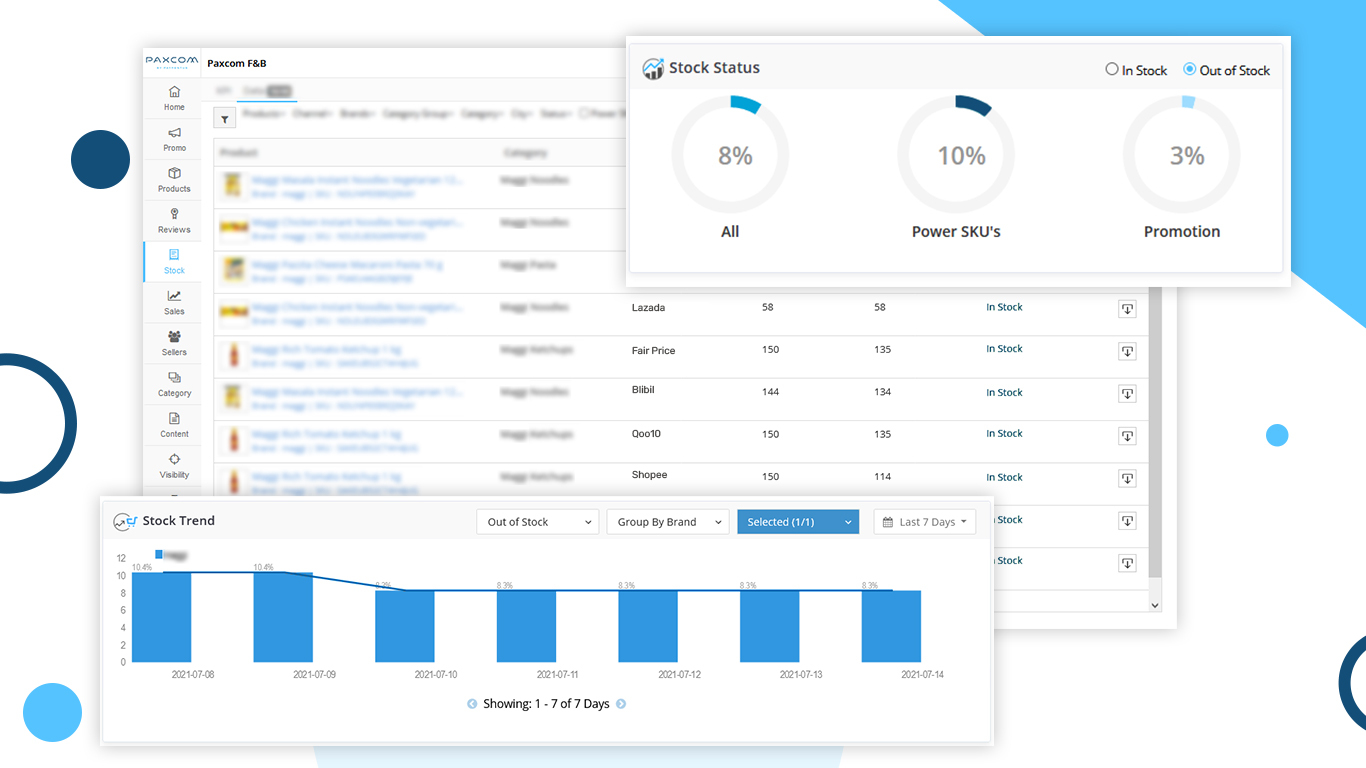Out-of-stock instances usually occur at the point of purchase when products are not available to customers. The situation arises when the product is in demand, but there is a lack of inventory at a particular platform.
In today’s retail world, lifestyle shifts have taken a dramatic move towards online shopping, resulting in the launch of more and more e-commerce businesses, and with the rise in demand, out-of-stock is a problem many brands face due to poor tracking and fill rate.
Table of Contents
Importance of tracking Stock Availability
From the outsider’s perspective, OOS does not seem so significant, but in terms of customer satisfaction, it is one of the key factors, and if such instances occur in continuity, it creates a negative impact on a brand’s performance.
Brands usually have a wide portfolio of their products on multiple platforms. It becomes tedious to track the inventory manually on each platform and costs extra time, which eventually leads to sales loss. By the time, brands look into the inventory reports shared by the channel, major sales loss and shift of customers towards other brands generally occur.
According to a report, if a product is unavailable, 70% of consumers would turn to another competing brand, and given the global scenario for every product, there is a replacement available for almost every product, which may result in substantial sales loss for a retailer. The other consequence is not just the sales loss, you also lose customer loyalty as well when they start looking elsewhere and become familiar with the competitors and different channels.
In addition to customer loyalty, you can also suffer long-term damage to your business because it creates an opportunity for competitors to steal the business from you.
Suppose, in pandemic times, the rise of generic medicines and masks is more than ever, and it is likely to increase with time, and this is where out-of-stock instances start to rise, and highly competitive markets can end up having a negative impact. Here, understanding and managing your inventories becomes crucial.
Another example is when you run out-of-stock on major e-commerce platforms, you lose not only revenue but also search ranking. When stock-outs occur, consumers begin to lose confidence in your brand, and as a result, your performance rank begins to fall as you lack sales velocity, which gives your competitors who sell the same product an edge.
How can Paxcom help avoid Sales Loss and customers Shift to competition brands?
Paxcom’s Kinator software assists brands with inventory alerts and geographical inventory tracking, which provides brands with daily/weekly alerts to refill the out-of-stock products on multiple channels, simultaneously avoiding sales loss along with the data of their competing brands. Our dashboard and reports provide a summary of the in-stock percentage availability of each channel to get an overview. In addition, the same report contains channel-wise details of stock status that can be used to make quick decisions on inventory planning and replenishment. Let’s take a look at the Kinator Stock tracking screens below –

Paxcom provides a customized inventory management report that helps brands to analyze recent market patterns and differentiate between popular items and slower-moving products, giving you a clearer understanding of what should and should not be stocked.

Determining inventory level is very important, as many factors such as demand forecasts, continuing promotion, seasonal fluctuations, and any external reason are important to consider. Kinator is Paxcom’s in-house software that enables brands to manage all these factors from one location.
To avoid out-of-stock situations, we provide demand forecasting services in which we analyze the previous 6 months of sales data, out-of-stock product history, category level product history, and develop an AI-based algorithm to manage inventory efficiently for reducing OOS instances and increasing field rate. The clients who have used the demand-forecasting model have improved on OOS by 50% within 3 months of implementation.
Using our custom analytics, we provide brands with tentative Sales Loss that they might have incurred due to out-of-stock instances for each category, brand, and product.
How Kinator’s OOS tracking can help in AMS optimization
- Monitoring the OOS of your products during your AMS campaigns will allow you to alter your strategy effectively and efficiently in terms of reducing the spend wastage on out-of-stock products.
- OOS status is an indicator of how fast or slow the stocks are moving out. Monitoring it regularly can help you in optimizing the bids of your AMS campaigns.
- Kinator tracking allows you to alter your AMS strategy in case of a low stock situation, it is essential because if your products go OOS, your Sponsored product campaigns instantly become ineligible, and your best seller rank drops by the second. It wouldn’t be at all surprising if your organic ranking for given keywords takes a severe hit.
- By the time your product’s been restocked, there could be increased competition, price changes, problems with unauthorized sellers, issues related to the seasonality of the product could come into play
If your product goes out of stock, it will take considerable expense and energy to return to previous sales levels. It will probably take at least two or three weeks to regain lost ground once you’re back in stock.
While optimizing and advertising can work wonders for your brand, they only matter if you have a product to work with. Effectively managing your inventory comes first.
Please write us at info@paxcom.net to learn more about our various offerings, which can help you avoid out-of-stock instances leading to Sales Loss and the shift of customers to competition brands.














